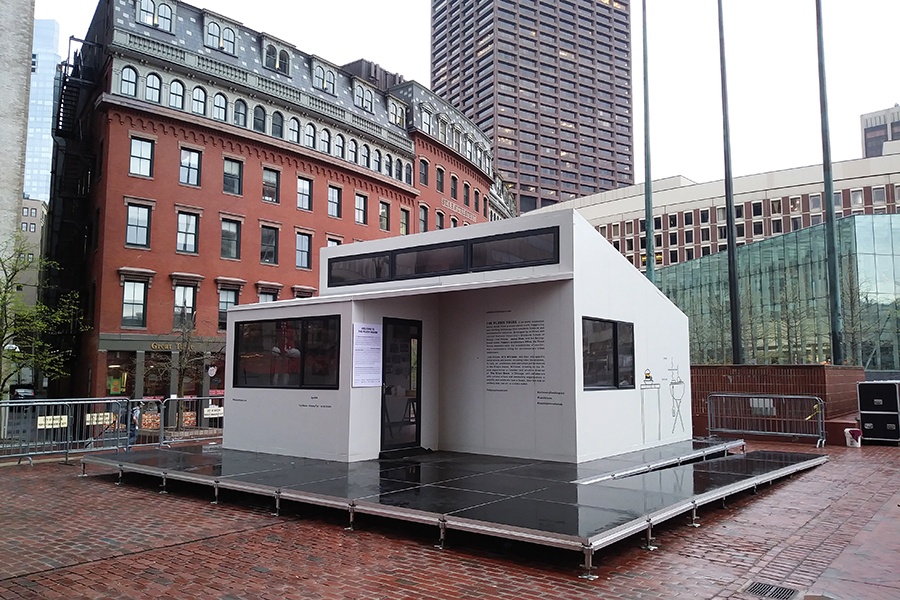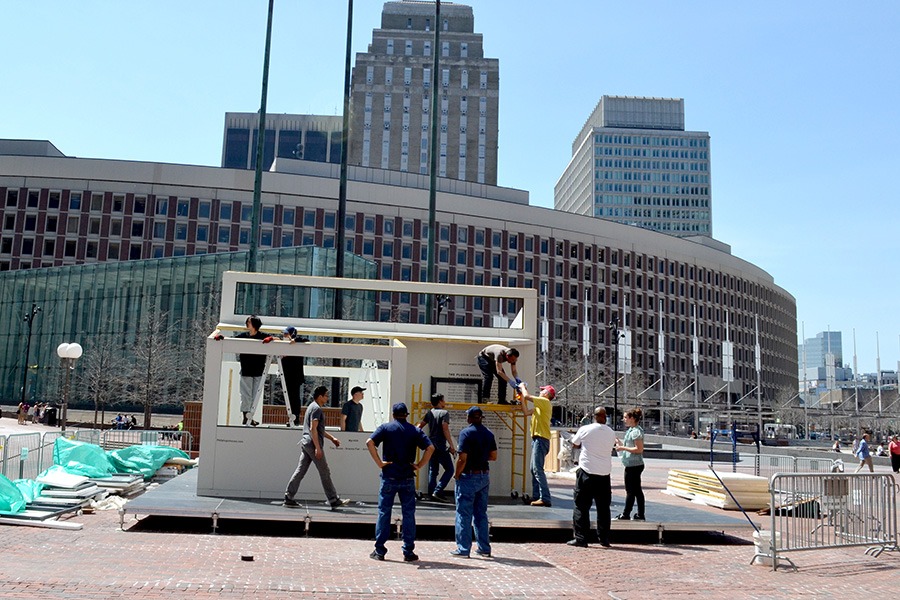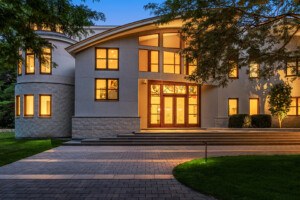The City of Boston Wants You to Put a Tiny Home in Your Backyard
You can see a model of one, called the Plugin House, at City Hall Plaza this week.

Photo courtesy of the Mayor’s Housing Innovation Lab
Boston’s housing market in a tough spot right now. There aren’t enough homes to meet the demand of all the people who want to live here, driving the cost of living sky high. One way to fix that is to increase housing density, or in other words, create more supply. But how can we build more housing in a city where available land is extraordinarily scarce?
Build tiny houses in backyards, suggests the Mayor’s Housing Innovation Lab. The lab, which was established as a permanent office within the city’s department of neighborhood development last year, works to increase housing affordability by testing out-of-the-box solutions. Already, it’s helped to change policies allowing for more compact living in the city, and has partnered with intergenerational homeshare platform Nesterly to pair Boston’s baby boomers with graduate student roommates.
But the housing lab’s newest venture, called the Plugin House, seeks to build tiny houses on those relatively small swaths of land known as backyards.
“We want to know if having homes in backyards is one way to add affordable units on the market, and in a way that doesn’t impact the fabric of the neighborhood,” explains Marcy Ostberg, director of the Mayor’s Housing Innovation Lab.
To give Bostonians an idea of how that might work, the lab has set up a model house in City Hall Plaza, allowing passersby to tour the space and give feedback.
The 360-square-foot house, created from a series of insulated panels, is meant to be easily constructed by the average person. This one took about five hours to put together, and would cost a homeowner about $50,000 to build. The model was designed by James Shen, a Loeb Fellow at the Harvard Graduate School of Design, and has been decorated by a group of students from arts nonprofit Artists for Humanity.

Photo courtesy of the Mayor’s Housing Innovation Lab
Inside, there isn’t any plumbing, wiring, or furniture—just tape on the walls to outline where a kitchen, living room, or bedroom might go.
“We want people to imagine what it could be without feeling like this is a real home,” says Ostberg. “It’s more about engaging their imagination.”
The Plugin House initiative is part of the housing lab’s Additional Dwelling Unit Pilot, which is helping homeowners carve out smaller units within their homes. Both the Plugin House, constructed outside the main house, and the additional dwelling units, created within a home’s footprint, are meant to provide a way for homeowners to bring in rental income, ultimately preventing them from being pushed out of their neighborhoods.
Backyard homes have caught on in other cities, too. Last year, Los Angeles approved a new program that aims to build more than 1,000 backyard homes for the homeless.
“But even just a couple hundred would make a dent in our housing issues,” explains Ostberg. “And help people be able to stay in their neighborhoods.”
As builders worked to construct the Plugin House this week, the unfinished structure managed to pique the curiosity of those walking by.
“We had this theory that this king of thing would engage people and have them want to talk to us. And it’s working,” says Ostberg. “The things I have already heard from people are ‘Yeah, housing is expensive. But I could imagine my parents living there when they’re older. I could imagine my kid coming home from school and living there. I could use it as an extra rental.”
The Plugin House will be open for tours from 11 a.m. to 2 p.m. on weekdays and 2 p.m. to 8 p.m. on weekends through Sunday, May 13. More information is available at boston.gov.

Photo courtesy of the Mayor’s Housing Innovation Lab
The Boston Home team has curated a list of the best home design and home remodeling professionals in Boston, including interior designers, custom closets, kitchen and bath experts, and more. Get the help you need with FindIt/Boston's guide to home renovation pros.


